Details
SIR PETER PAUL RUBENS (SIEGEN 1577-1640 ANVERS)
Étude d’homme agenouillé vu de profil
pierre noire, rehaussé de blanc sur papier vélin
40,6 x 29,1 cm (15 x 11 1/2 in.)
Provenance
Herman de Kat (1784-1865), Rotterdam ; Lamme, Rotterdam, 4-8 mars 1867, lot 233 ; où acquis par
Joannes de Clercq (1842-1867), Amsterdam ; par héritage à son frère,
Pieter de Clercq (1849-1931) ; par héritage à son fils,
Samuel de Clercq (1876-1962), La Haye ; par héritage aux propriétaires actuels.
Literature
L. Burchard et R.-A. d’Hulst, Rubens Drawings, Bruxelles 1963, I, no 89, II, ill.
M. Jaffé, ‘Rubens as a Draughtsman’, The Burlington Magazine, CVII, no 748, juillet 1965, p. 379.
Y.I. Kuznetsov, Risunki Rubensa, Moscou, 1974, no 66, ill.
M. Bernhard, Rubens Handzeichnungen, Munich, 1977, p. 121, 260, ill.
R.A. d’Hulst and M. Vandenven, Rubens. The Old Testament, Londres et Oxford, 1989 (Corpus Rubenianum Ludwig Burchard, III), p. 157, sous le no 49.
C. White in Dutch and Flemish Drawings in the Victoria and Albert Museum, Londres, 2014, II, p. 442, sous le no 520.
A.-M. Logan et K. Lohse Belkin, The Drawings of Peter Paul Rubens. A Critical Catalogue. Volume Two. 1609-1620, Turnhout, 2023 (à paraître), I, no 339, II, ill.
Post lot text
PETER PAUL RUBENS, STUDY OF A KNEELING MAN SEEN IN PROFILE, BLACK CHALK, HEIGHTENED WITH WHITE, ON BUFF PAPER
In contrast to artists like Rembrandt, Rubens almost aways drew with a specific end in view. A substantial portion of his drawn œuvre consists of compositional sketches in pen, executed in a shorthand style, and of large, fully developed studies in black chalk, sometimes sparsely heightened with white. The latter are monumental studies of the pose, anatomy or draperies of the men and women that people the often complex compositions he was developing for his finished works. No artist north of the Alps before him seems to have incorporated such studies on this scale in his working method, and few artists after him have equalled their expressive power and the apparent simplicity of means with which he conjured up life and volume in these sheets. ‘There is a wonderful concreteness about these drawings, but nothing pedestrian,’ wrote Julius Held in his classic study of Rubens as a draughtsman; ‘the true secret of their beauty lies in the fact that each form seems to be animated by a spirit commensurate with its majestic shape. […] these forms and figures have in common an inner dignity, a grandeur less of size than of bearing’ (Rubens. Selected Drawings, Oxford, 1986, p. 30). Admired and copied from early on, Rubens’s figure studies have been pursued by the great collectors of the past and by public institutions, and scarcely any remain in private hands. With the notable exception of a figure study for the Raising of the Cross triptych at Antwerp cathedral (sold at Sotheby’s New York, 30 January 2019, lot 15), no drawings of this type have been offered at auction for over twenty years. The work offered here, published several times but never exhibited, has remained in the family of the buyer who acquired it at the sale of the collection of Herman de Kat in 1867 (see the introduction, and Provenance).
There can be little doubt that the drawing was made as a study for a painting or other finished composition, but no definitive connection has been established. It was first related to the Miraculous Draught of Fishes in the church of Onze-Lieve-Vrouw-over-de-Dijle in Mechelen, both on the drawing’s old mount and in the catalogue of the De Kat sale (for the painting, see K. Bulckens, Rubens; The Ministry of Christ, London and Turnhout, 2017, no. 18, fig. 80). The suggested connection is probably with the young man wearing blue at upper right in the central panel, but his pose and drapery are entirely different. Ludwig Burchard and R.-A. d’Hulst, who introduced the drawing in the scholarly literature in 1963, pointed out the similarity to a figure at upper left in a pen sketch of which the subject is usually identified as Tobit burying a slain Jew (fig. 1; sold Christie’s, New York, 28 January 1999, lot 94; see D’Hulst and Vandenven, op. cit., no. 49, fig. 108; and A.-M. Logan, with K. Lohse Belkin, The Drawings of Peter Paul Rubens. A Critical Catalogue. Volume One. 1590-1608, Turnhout, 2021, no. 199, II, fig. 255). The folds of the figures’ garments and even their pointed beards correspond closely, but the two drawings have been dated to different periods: while a sketch on the verso of the pen drawing is related to a painting produced by Rubens in Rome in 1606-1607, the figure study offered here is of a type generally associated with works by Rubens from the 1610s (see below). The suggestion made by Burchard and D’Hulst that Rubens may have been reminded of his earlier pen sketch in the second half of the 1610s, when conceiving the Saint Stephen altarpiece now in the Musée des Beaux-Arts de Valenciennes (inv. P.46.1.10), does not solve the problem, as the figure assisting at the burial of the saint in the altarpiece’s right wing, is only roughly comparable in pose (for the painting, see H. Vlieghe, Saints, II, Brussels, 1973, no. 148, fig. 117).
While the drawing is primarily a drapery study, recording the fall of light and shadow on the ample cloak of a kneeling young man, it is greatly enhanced by the sensitive depiction of his thoughtful face. There can be little doubt that Rubens was working from a life model, probably a studio assistant whom the master had requested to take a pose determined beforehand in a compositional sketch in pen or oil. One could imagine the figure serving as a shepherd, a magus, or even Saint Joseph in an Adoration. Comparable is a study for a kneeling woman in the Albertina, inv. 17652 (fig. 2), made as the model for a shepherdess in the Adoration of the Shepherds, today at the Musée des Beaux-Arts de Rouen, inv. D.803-6 (H. Devisscher and H. Vlieghe, Rubens. The Life of Christ before the Passion. The Youth of Christ, London and Turnhout, 2014, no. 15, II, fig. 47; for the drawing, see ibid., I, no. 15a, II, fig. 49). Executed by Rubens and his workshop in 1616-1617, the picture and the related study provide a rough date for the drawing discussed here, further supported by other comparisons, for instance with two studies at the Fitzwilliam Museum, Cambridge (discussed in A.-M. Logan, with M.C. Plomp, Peter Paul Rubens. The Drawings, exhib. cat., New York, The Metropolitan Museum of Art, 2005, nos. 61, 62 ill.), or one at the Victoria and Albert Museum, London (inv. Dyce.519; see White, op. cit., no. 520, ill.). They brilliantly demonstrate that Rubens, even in studies for figures in less heroic poses, was always able to instil his drawings with robust form and inner feeling – ‘a grandeur less of size than of bearing’.
Fig. 1. Peter Paul Rubens, Tobit burying a slain Jew (?). Private collection.
Fig. 2. Peter Paul Rubens, Study of a kneeling woman seen in profile, Albertina, Vienna.
Details
SIR PETER PAUL RUBENS (SIEGEN 1577-1640 ANVERS)
Étude d’homme agenouillé vu de profil
pierre noire, rehaussé de blanc sur papier vélin
40,6 x 29,1 cm (15 x 11 1/2 in.)
Provenance
Herman de Kat (1784-1865), Rotterdam ; Lamme, Rotterdam, 4-8 mars 1867, lot 233 ; où acquis par
Joannes de Clercq (1842-1867), Amsterdam ; par héritage à son frère,
Pieter de Clercq (1849-1931) ; par héritage à son fils,
Samuel de Clercq (1876-1962), La Haye ; par héritage aux propriétaires actuels.
Literature
L. Burchard et R.-A. d’Hulst, Rubens Drawings, Bruxelles 1963, I, no 89, II, ill.
M. Jaffé, ‘Rubens as a Draughtsman’, The Burlington Magazine, CVII, no 748, juillet 1965, p. 379.
Y.I. Kuznetsov, Risunki Rubensa, Moscou, 1974, no 66, ill.
M. Bernhard, Rubens Handzeichnungen, Munich, 1977, p. 121, 260, ill.
R.A. d’Hulst and M. Vandenven, Rubens. The Old Testament, Londres et Oxford, 1989 (Corpus Rubenianum Ludwig Burchard, III), p. 157, sous le no 49.
C. White in Dutch and Flemish Drawings in the Victoria and Albert Museum, Londres, 2014, II, p. 442, sous le no 520.
A.-M. Logan et K. Lohse Belkin, The Drawings of Peter Paul Rubens. A Critical Catalogue. Volume Two. 1609-1620, Turnhout, 2023 (à paraître), I, no 339, II, ill.
Post lot text
PETER PAUL RUBENS, STUDY OF A KNEELING MAN SEEN IN PROFILE, BLACK CHALK, HEIGHTENED WITH WHITE, ON BUFF PAPER
In contrast to artists like Rembrandt, Rubens almost aways drew with a specific end in view. A substantial portion of his drawn œuvre consists of compositional sketches in pen, executed in a shorthand style, and of large, fully developed studies in black chalk, sometimes sparsely heightened with white. The latter are monumental studies of the pose, anatomy or draperies of the men and women that people the often complex compositions he was developing for his finished works. No artist north of the Alps before him seems to have incorporated such studies on this scale in his working method, and few artists after him have equalled their expressive power and the apparent simplicity of means with which he conjured up life and volume in these sheets. ‘There is a wonderful concreteness about these drawings, but nothing pedestrian,’ wrote Julius Held in his classic study of Rubens as a draughtsman; ‘the true secret of their beauty lies in the fact that each form seems to be animated by a spirit commensurate with its majestic shape. […] these forms and figures have in common an inner dignity, a grandeur less of size than of bearing’ (Rubens. Selected Drawings, Oxford, 1986, p. 30). Admired and copied from early on, Rubens’s figure studies have been pursued by the great collectors of the past and by public institutions, and scarcely any remain in private hands. With the notable exception of a figure study for the Raising of the Cross triptych at Antwerp cathedral (sold at Sotheby’s New York, 30 January 2019, lot 15), no drawings of this type have been offered at auction for over twenty years. The work offered here, published several times but never exhibited, has remained in the family of the buyer who acquired it at the sale of the collection of Herman de Kat in 1867 (see the introduction, and Provenance).
There can be little doubt that the drawing was made as a study for a painting or other finished composition, but no definitive connection has been established. It was first related to the Miraculous Draught of Fishes in the church of Onze-Lieve-Vrouw-over-de-Dijle in Mechelen, both on the drawing’s old mount and in the catalogue of the De Kat sale (for the painting, see K. Bulckens, Rubens; The Ministry of Christ, London and Turnhout, 2017, no. 18, fig. 80). The suggested connection is probably with the young man wearing blue at upper right in the central panel, but his pose and drapery are entirely different. Ludwig Burchard and R.-A. d’Hulst, who introduced the drawing in the scholarly literature in 1963, pointed out the similarity to a figure at upper left in a pen sketch of which the subject is usually identified as Tobit burying a slain Jew (fig. 1; sold Christie’s, New York, 28 January 1999, lot 94; see D’Hulst and Vandenven, op. cit., no. 49, fig. 108; and A.-M. Logan, with K. Lohse Belkin, The Drawings of Peter Paul Rubens. A Critical Catalogue. Volume One. 1590-1608, Turnhout, 2021, no. 199, II, fig. 255). The folds of the figures’ garments and even their pointed beards correspond closely, but the two drawings have been dated to different periods: while a sketch on the verso of the pen drawing is related to a painting produced by Rubens in Rome in 1606-1607, the figure study offered here is of a type generally associated with works by Rubens from the 1610s (see below). The suggestion made by Burchard and D’Hulst that Rubens may have been reminded of his earlier pen sketch in the second half of the 1610s, when conceiving the Saint Stephen altarpiece now in the Musée des Beaux-Arts de Valenciennes (inv. P.46.1.10), does not solve the problem, as the figure assisting at the burial of the saint in the altarpiece’s right wing, is only roughly comparable in pose (for the painting, see H. Vlieghe, Saints, II, Brussels, 1973, no. 148, fig. 117).
While the drawing is primarily a drapery study, recording the fall of light and shadow on the ample cloak of a kneeling young man, it is greatly enhanced by the sensitive depiction of his thoughtful face. There can be little doubt that Rubens was working from a life model, probably a studio assistant whom the master had requested to take a pose determined beforehand in a compositional sketch in pen or oil. One could imagine the figure serving as a shepherd, a magus, or even Saint Joseph in an Adoration. Comparable is a study for a kneeling woman in the Albertina, inv. 17652 (fig. 2), made as the model for a shepherdess in the Adoration of the Shepherds, today at the Musée des Beaux-Arts de Rouen, inv. D.803-6 (H. Devisscher and H. Vlieghe, Rubens. The Life of Christ before the Passion. The Youth of Christ, London and Turnhout, 2014, no. 15, II, fig. 47; for the drawing, see ibid., I, no. 15a, II, fig. 49). Executed by Rubens and his workshop in 1616-1617, the picture and the related study provide a rough date for the drawing discussed here, further supported by other comparisons, for instance with two studies at the Fitzwilliam Museum, Cambridge (discussed in A.-M. Logan, with M.C. Plomp, Peter Paul Rubens. The Drawings, exhib. cat., New York, The Metropolitan Museum of Art, 2005, nos. 61, 62 ill.), or one at the Victoria and Albert Museum, London (inv. Dyce.519; see White, op. cit., no. 520, ill.). They brilliantly demonstrate that Rubens, even in studies for figures in less heroic poses, was always able to instil his drawings with robust form and inner feeling – ‘a grandeur less of size than of bearing’.
Fig. 1. Peter Paul Rubens, Tobit burying a slain Jew (?). Private collection.
Fig. 2. Peter Paul Rubens, Study of a kneeling woman seen in profile, Albertina, Vienna.
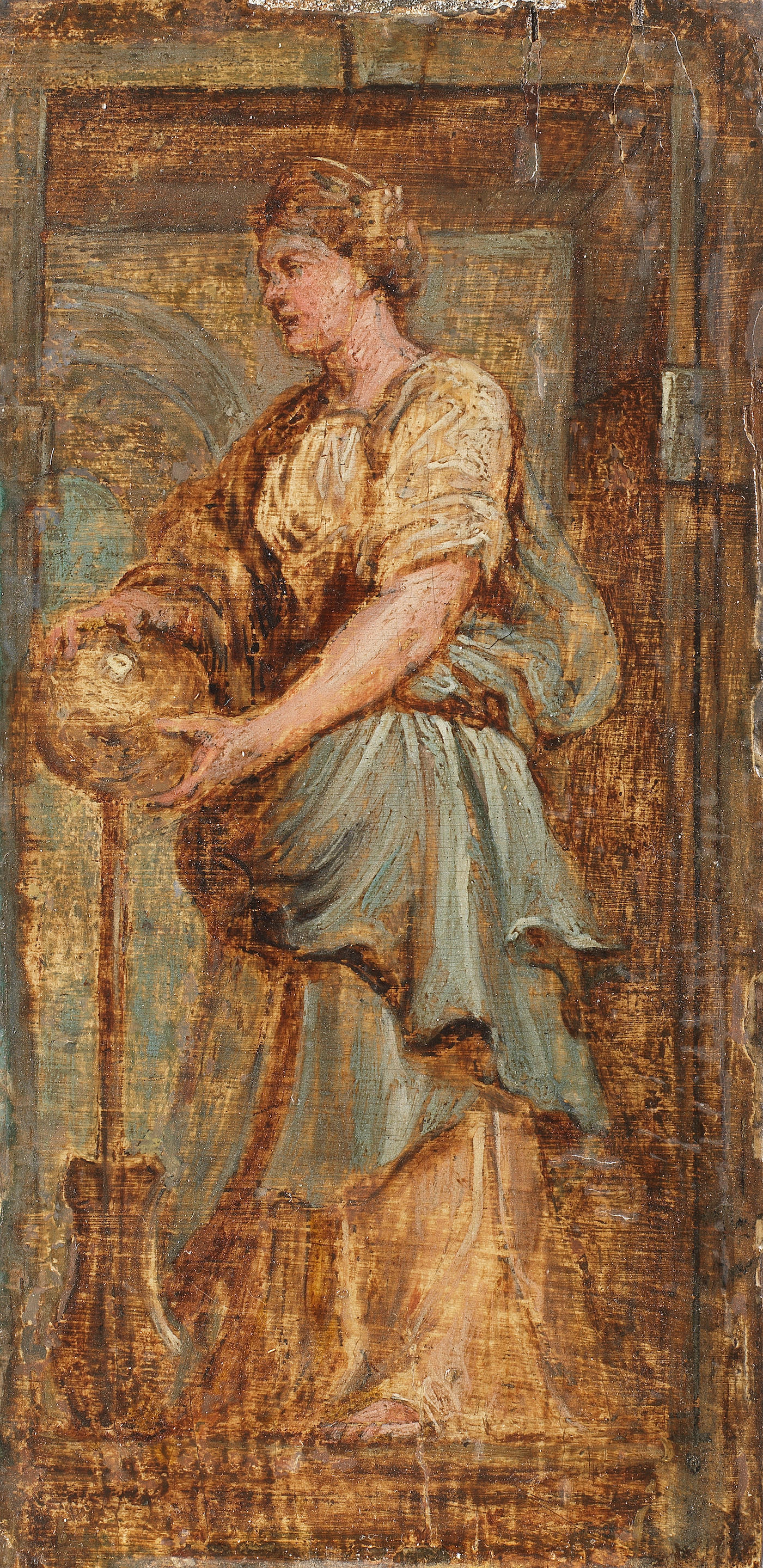

.jpg)
.jpg)


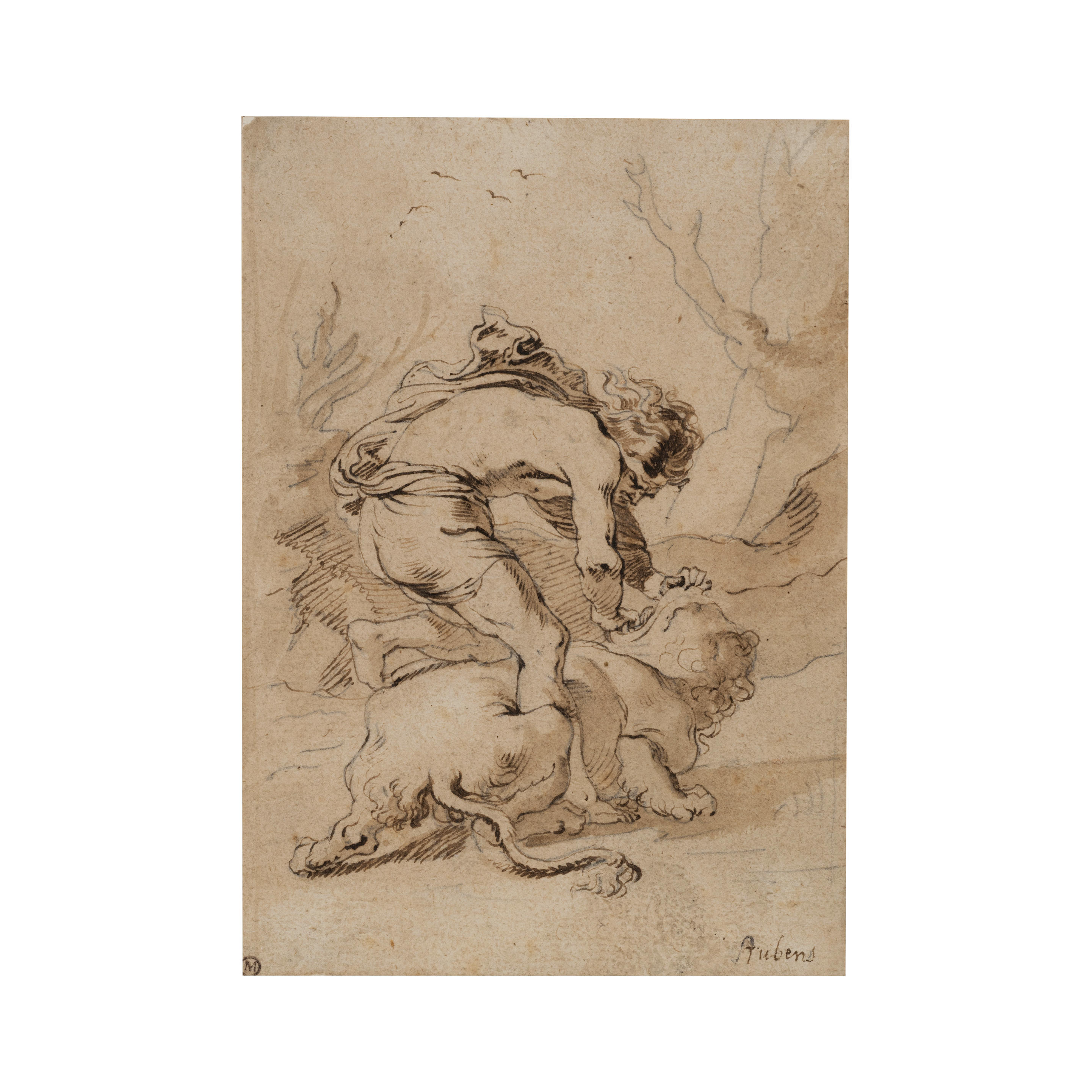
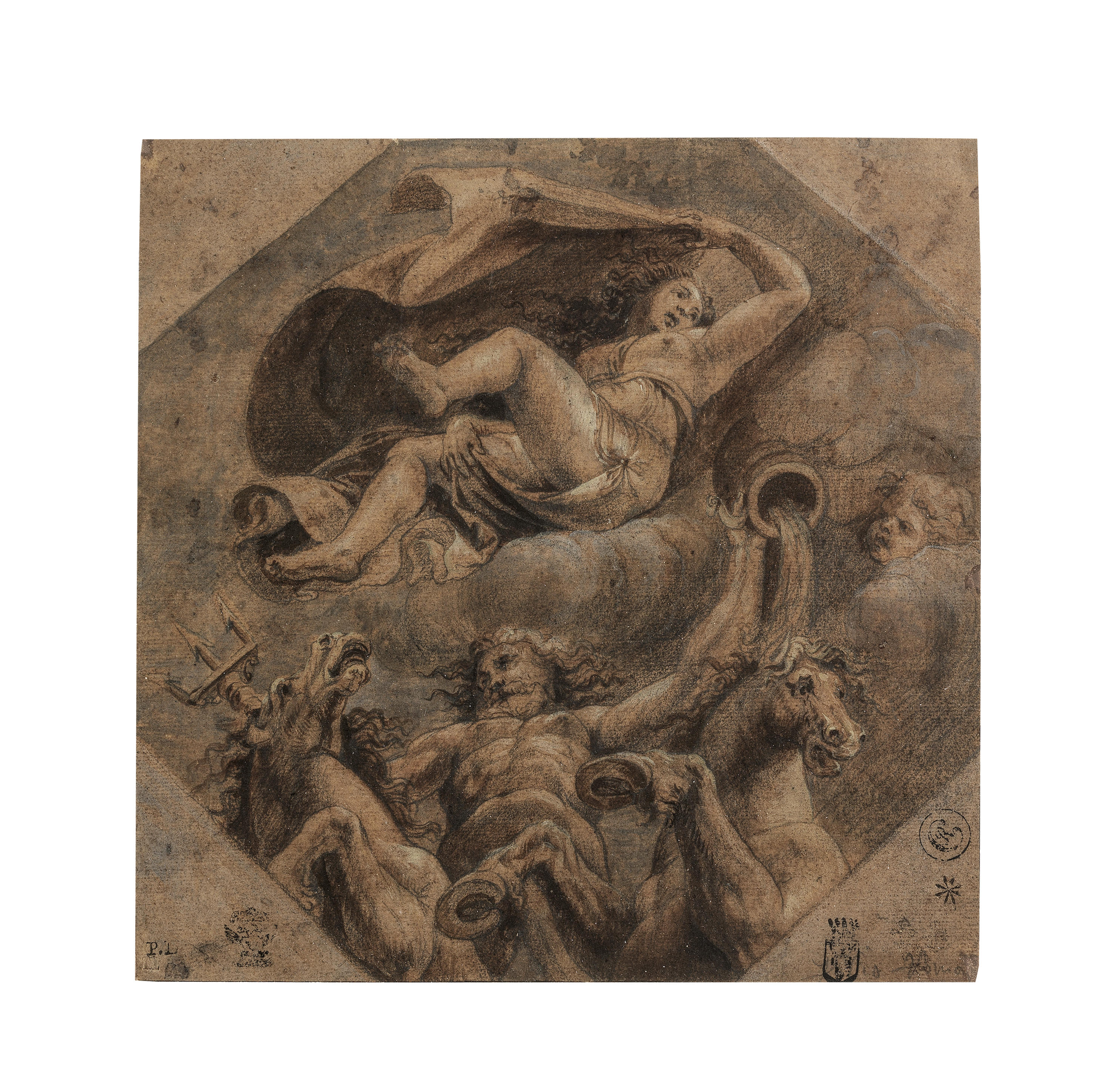
.jpg)
.jpg)
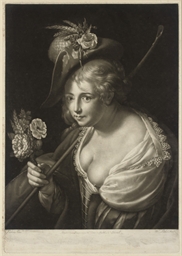


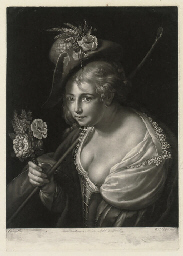
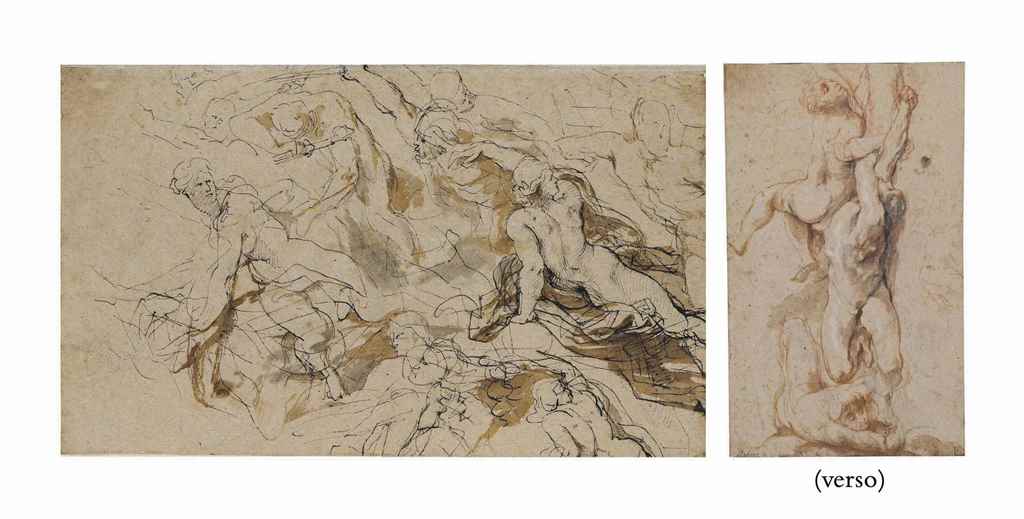
Try LotSearch and its premium features for 7 days - without any costs!
Be notified automatically about new items in upcoming auctions.
Create an alert